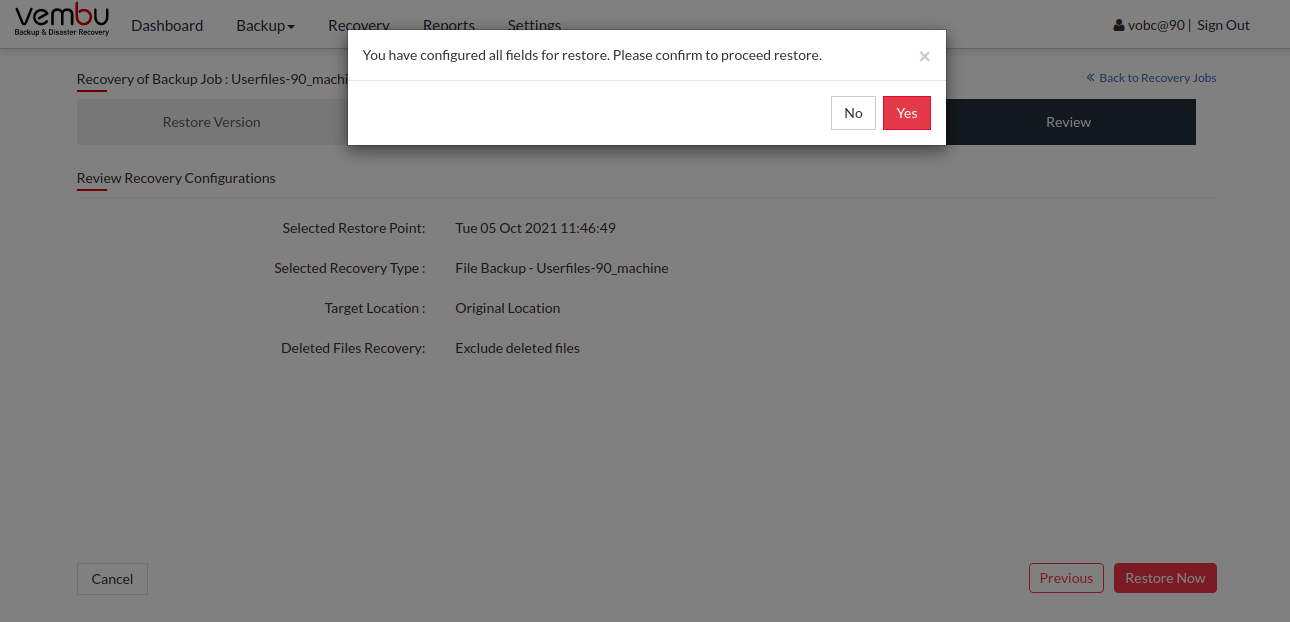Restore from Cloud BDR Client GUI
- Navigate to the Recovery tab and click the Restore option alongside the backup job you want to restore.
 Step 1- Select Restore Version
Step 1- Select Restore Version
A tree listing various backup time-stamps with the full backup as its parent node will be displayed. This list generated is based on incremental and retention configured. If an additional full backup is configured, then there will be more than one parent node list based on the configuration.
- Select the time-stamp from which you want to restore data and proceed to select files/folders.
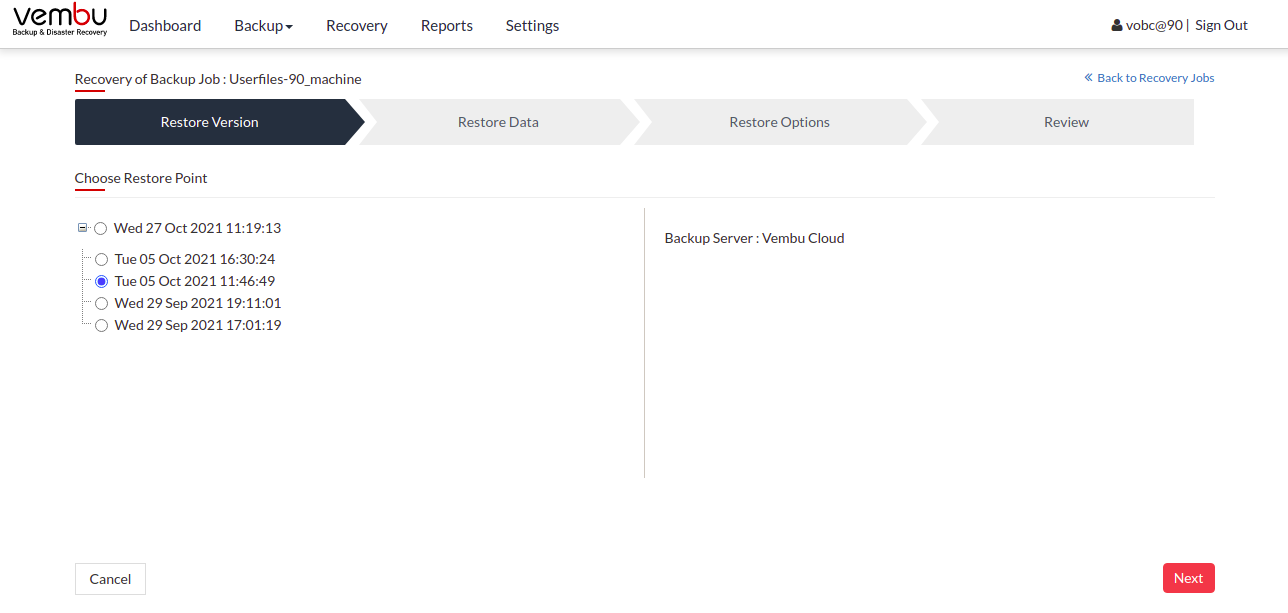
Step 2- Select Files/Folders
A tree list with backed-up files and folders based on chosen time-stamp will be displayed.
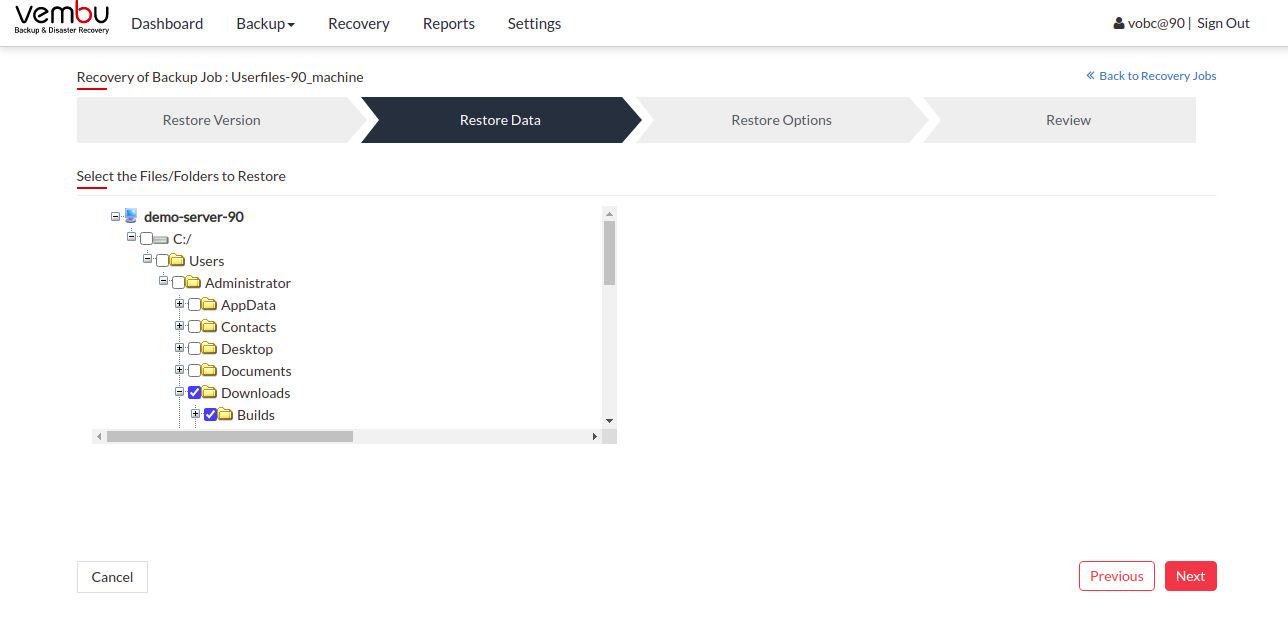
You can select files/folders in 3 ways. You can either:
- Select the root folder to proceed to restore the entire backed-up data for the chosen time-stamp.
- Select specific files and folders alone based on requirement and proceed with the restore.
- Using the filter option, you can filter files by file types with extensions(Ex: *.doc). Filtering more than one file type can be done by separating them with a comma (Ex: *.doc, *.pdf, and so on).
Step 3- Select Restore Options
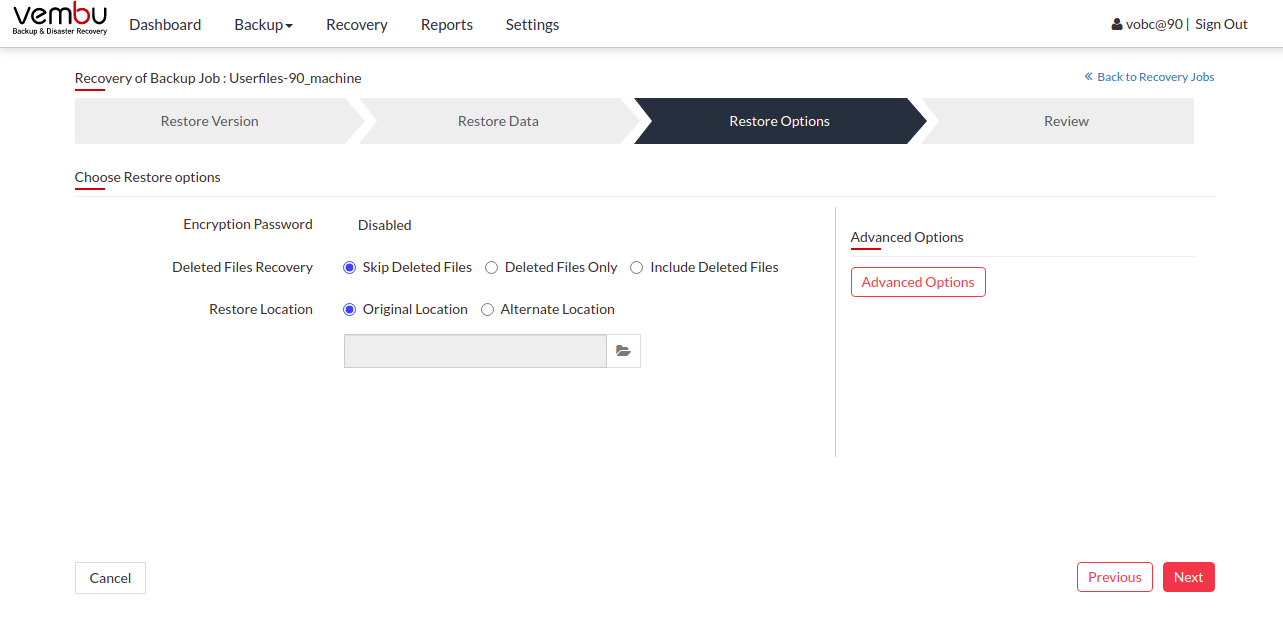
Password- If a backup is password protected, provide the respective password.
Restore machine- The client machine where backup data has to be restored.
- Restore deleted files - This gives 3 options to choose from:
- Skip deleted files - (Restore backup data skipping deleted files)
- Deleted files only - (Restore deleted files alone)
- Include deleted files - (Restore backup data along with deleted files)
Restore to(This gives two optional locations to choose from):
- Original location- This option is available if the backup is restored to the same machine, where data is restored to its original folder location.
If the source file is already present in the restore location, then the restored file will be saved with an extension ‘*.sg’. (This can be changed using “Advanced Options”) |
- Alternate location- This option allows the user to restore the backup to a different location, where backup data is restored in its original folder structure.
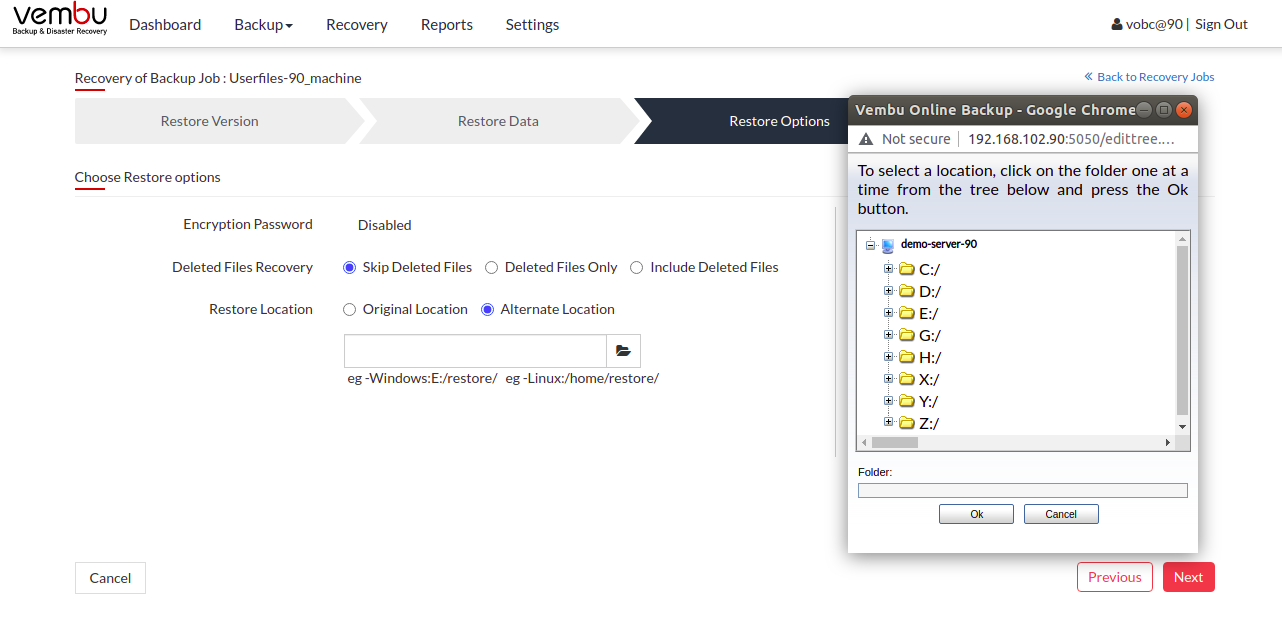
Advanced Options:
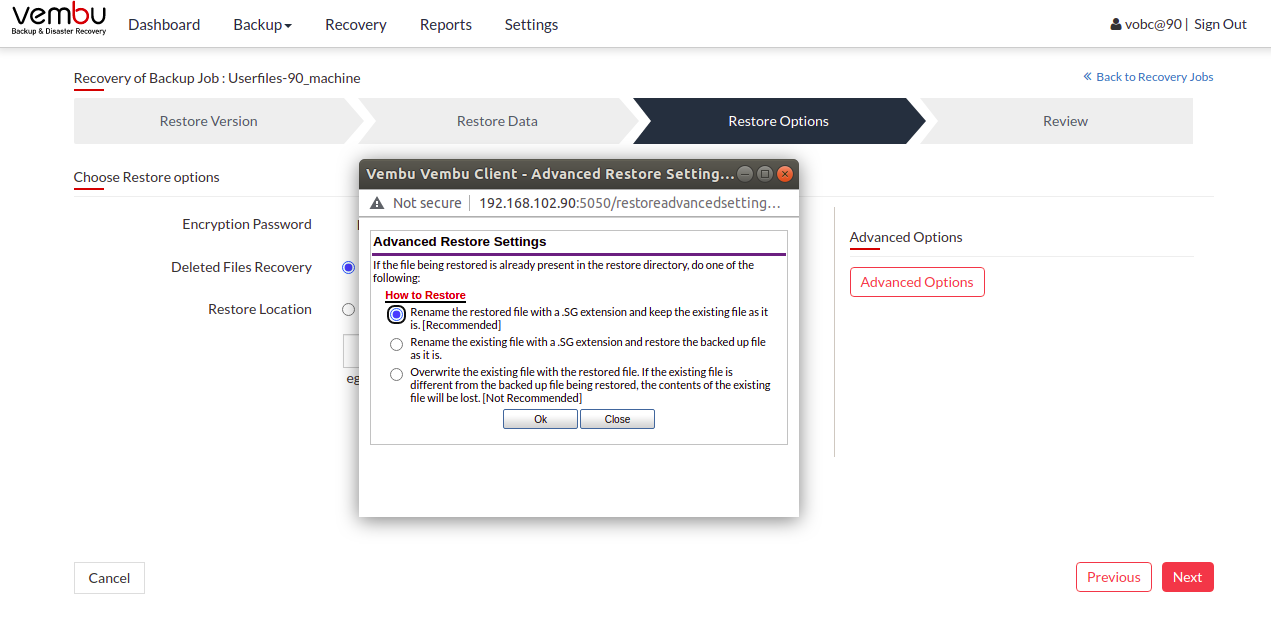
When backup data is restored, it is possible that source files are already present in the restore location. In this case, OnlineBackup will retain source files by default and restore files by renaming them with a *.sg extension.
'Advanced Settings' allow alternate options to change this, they are:
- Rename the restored file with *.SG extension and keep existing files (This is the default option selected).
- Rename the existing file with *.SG extension and restore the backup file as it is.
- Overwrite the existing file with the restored file. (If an existing file is different from the restored backup file, the contents of source files will be lost. Choose this option if you are sure that the current file can be overwritten).
Step 4- Review Configuration
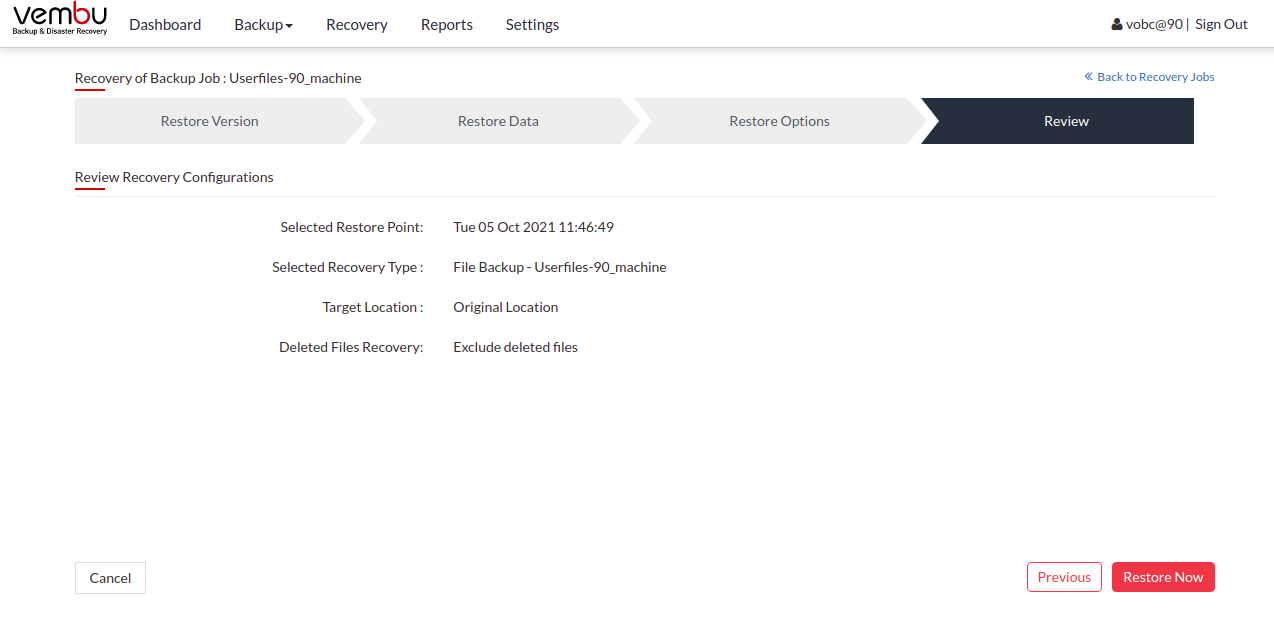
Once all options are chosen, review the configuration provided and click 'Restore now'. Review restore progress and make sure it gets completed successfully.
